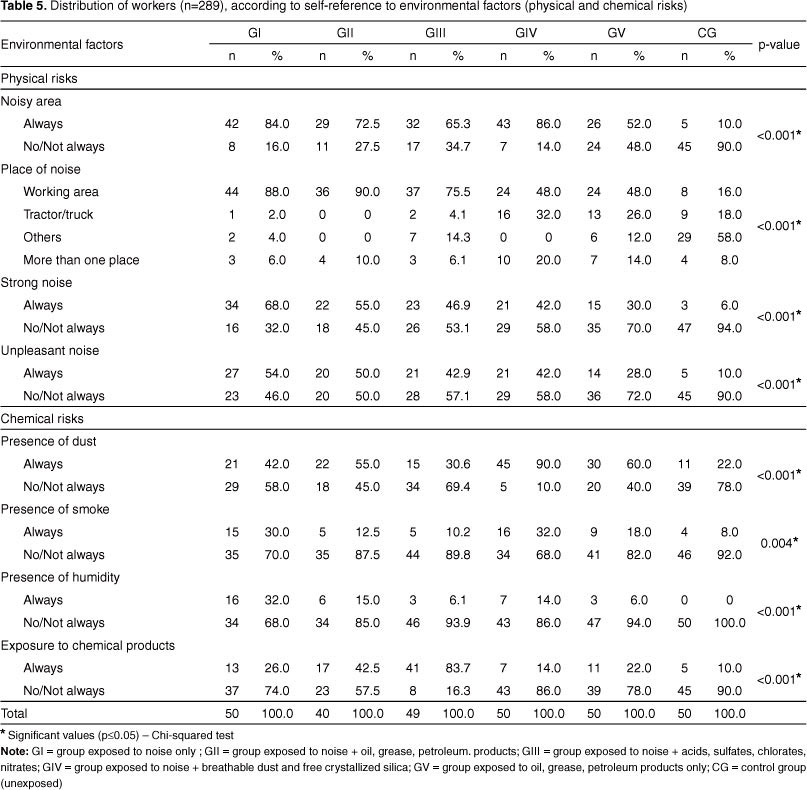PURPOSE: To investigate vocal symptoms and laryngeal sensations among workers of an ethanol and sugar mill exposed to noise and/or chemical substances. METHODS: Participants were 289 workers of an ethanol and sugar mill distributed into five exposure groups (I - noise; II - noise, oil, grease, petroleum derivatives; III - noise, acids, sulfates, chlorides, nitrates; IV - noise, breathable dust and free crystalline silica; V - oil, grease, petroleum derivatives) and a control group, who answered the questionnaire Conditions of Vocal Production - Teacher adapted to the professional category. The groups were compared regarding vocal symptoms, laryngeal sensations, smoking habits, and exposure to physical and chemical risks. This comparison was conducted using statistical analyses. RESULTS: The most reported vocal symptom and laryngeal sensation were low-pitched voice and cough with phlegm, respectively. Considering the physical risk in the work environment, groups I and IV were the ones that most reported exposure to noise. Because of this exposure, they increase voice intensity (Effect of Lombard-Tarneaud) and, thus, also reported vocal symptoms. Regarding chemical risks in the occupational environment, group IV was the one that most referred presence of dust and smoke, which were composed by breathable dust and silica. Such exposures lead to vocal symptoms and laryngeal sensations and, consequently, to vocal alterations. CONCLUSION: Vocal symptoms and laryngeal sensations can be related to professional activities where workers are exposed to physical and/or chemical risks.
Workers; Voice; Occupational risks; Working environment; Occupational health





